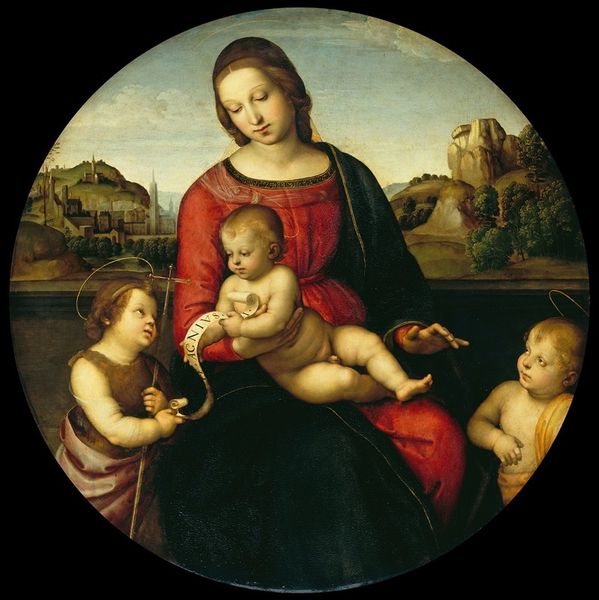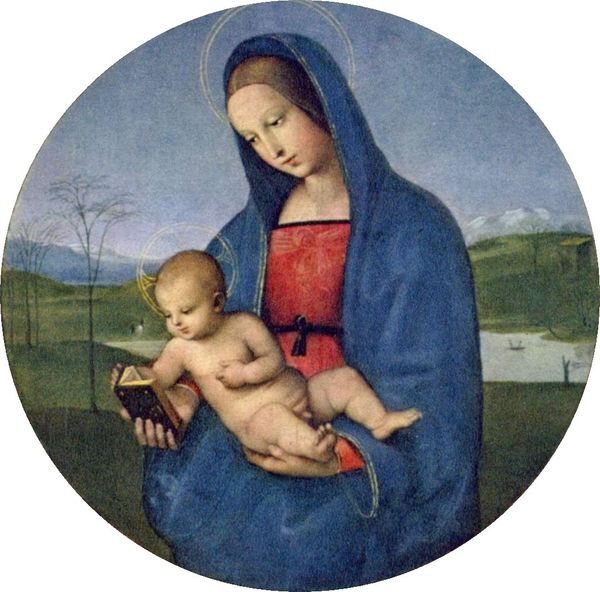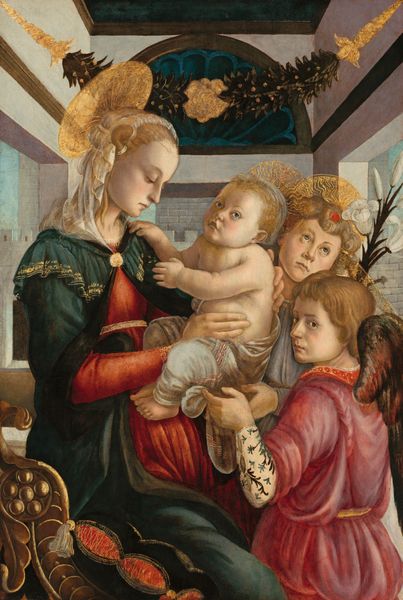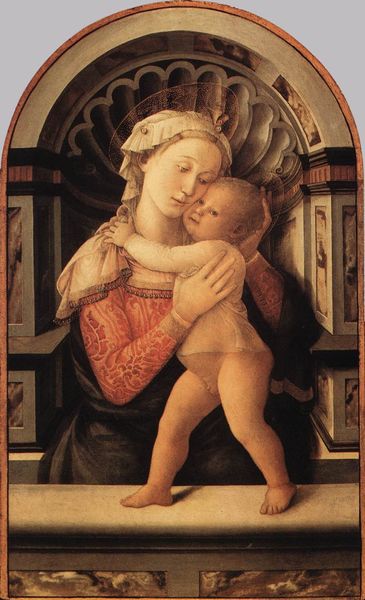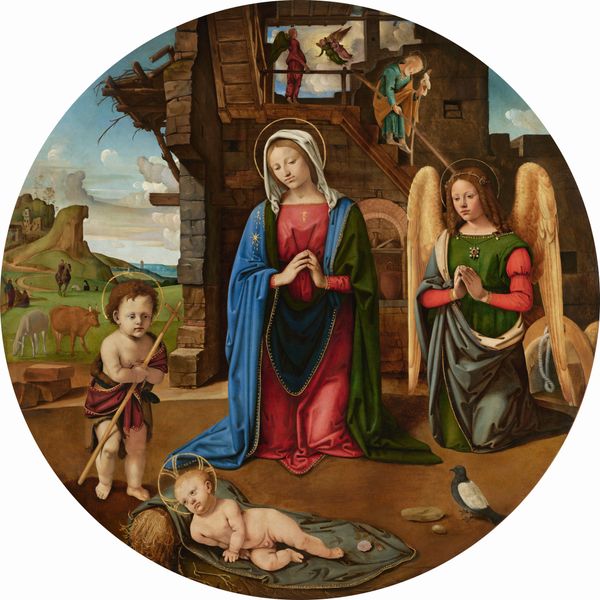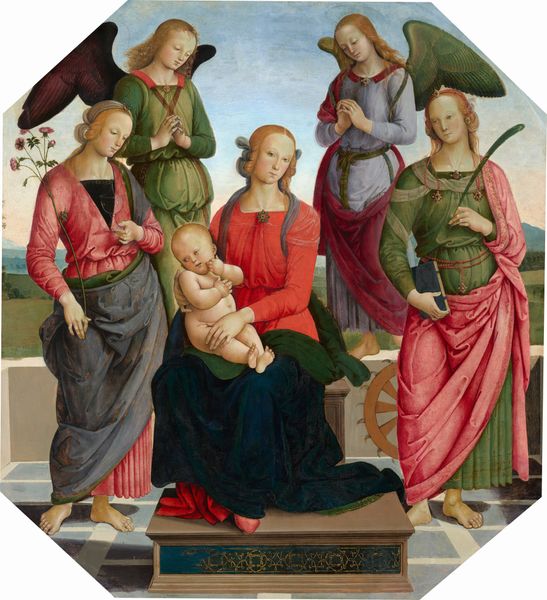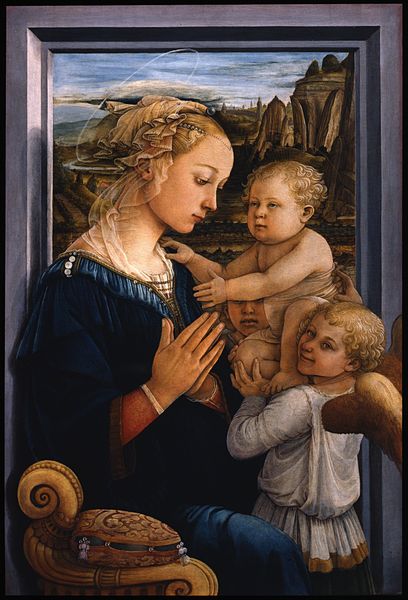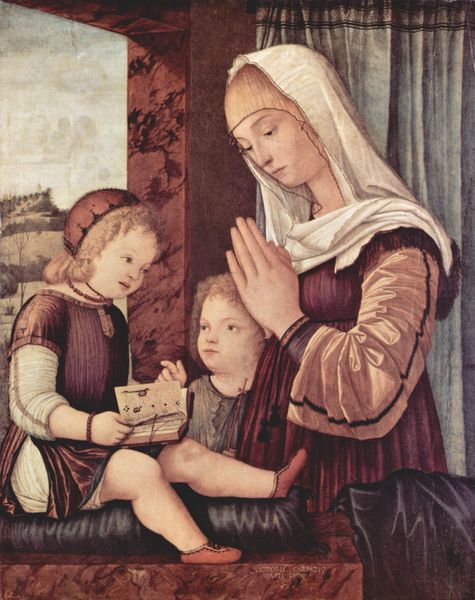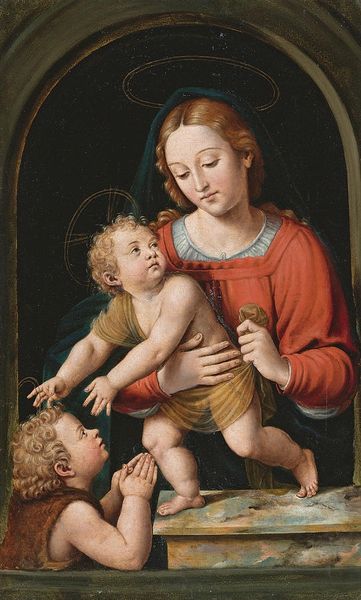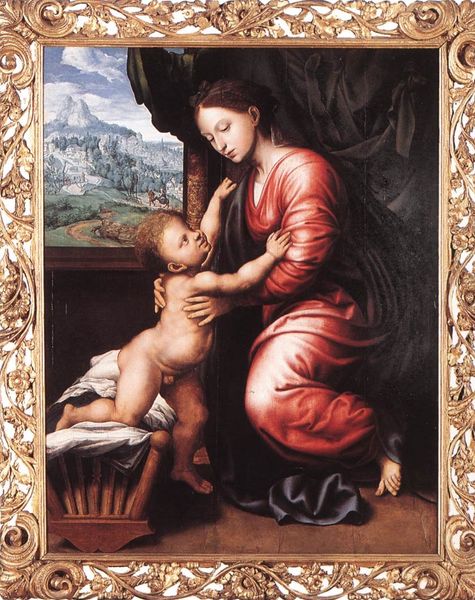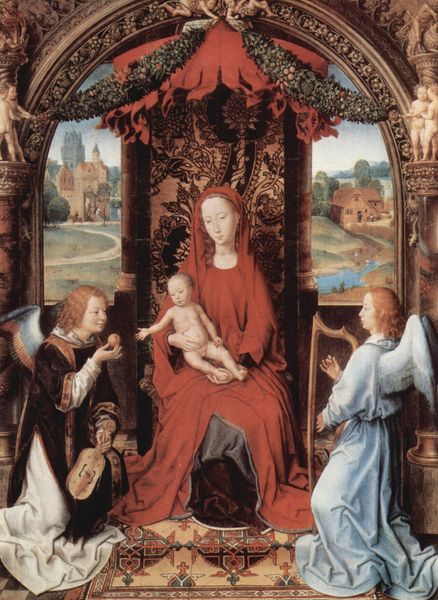
Virgin with the Child and Scenes from the Life of St. Anne 1452
0:00
0:00
filippolippi
Palazzo Pitti, Florence, Italy
tempera, painting
#
portrait
#
tempera
#
painting
#
figuration
#
child
#
framed image
#
christianity
#
history-painting
#
italian-renaissance
#
early-renaissance
#
portrait art
#
virgin-mary
#
christ
Copyright: Public domain
Filippo Lippi painted this scene of the Virgin and Child in Florence using tempera on wood, a painstaking method requiring the precise layering of pigment. Looking closely, the Virgin’s robes and the surrounding figures were created through this process, one that demanded considerable time and skill. The result is a smooth surface that almost feels like enamel. This painting technique was particularly well-suited to show detail, and Lippi makes the most of it – look at the intricate pattern of the floor and the delicate rendering of flesh tones. Painting in tempera was not just about technique; it was a highly socialized activity, dependent upon apprentices and assistants in workshops, and linked to patterns of patronage and consumption. The smooth, refined effect visible here can be seen as an aesthetic response to the rising economic power of Florence at the time – a visual assertion of the city's artistic and commercial strength. Recognizing the labor and context behind this work allows us to see beyond the image itself, appreciating its significance as a product of its time.
Comments
No comments
Be the first to comment and join the conversation on the ultimate creative platform.

